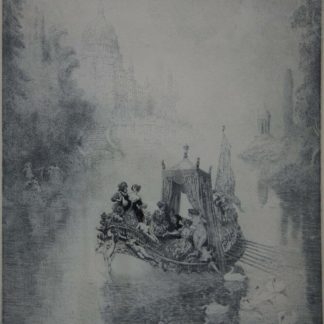Bio
Victor George (Vic) O’Connor (Australian 1918-2010) Bio
Victor was an important contributor to Australian Art notably with the realist movement from the late 1940s and an exponent of the principles of Social Realist Art Born in Melbourne and educated at Lilydale Primary School and then at Melbourne High School In 1939 Artist David Strachan suggested Vic attend George Bell’s Saturday afternoon classes and later was impressed with Vic’s art and suggested he exhibit in the newly formed Contemporary Art Society Victor attended Saturday afternoon art classes at the George Bell School in Melbourne for many terms but was mostly self-taught as an artist However the close associations formed at the George Bell School with other artists were enduring it was during this association the artist prepared strategies against the conservative forces Robert Menzies, James Stuart MacDonald, and Max Meldrum the stylistic enemy was tonal realism Bell taught ‘form’ ‘distortion’ and ‘expression’ and he stressed that art had to arise from imagination In 1941 Victor’s talent was officially recognized by his peers – he was awarded first prize by the Contemporary Art Society sharing the prize with Donald Friend As Bernard Smith stated at the time “Albert Tucker, Noel Counihan and Victor O’Connor were the three major contributors of the exhibition” In 1946 Victor as well as Yosl Bergner and Noel Counihan held their first major exhibition Three Realist Artists 16–25 July 1946 at the Myer Art Gallery in Melbourne which attracted considerable notice and approval During an interview with John Elder in 1998 Victor summed up their direction at the time: “The mainstream were painting yellow circles and black squares and we were painting the passing parade” also stated by critics “Sternly self-critical Victor reworks his paintings and repaints his subjects until he has exhausted them his pictures have become much richer in colour and texture and have an intensity of feeling that until recently was rare in Australian painting” and “Vic O’Connor’s work is distinguished by a really beautiful sense of colour and if at times his painting tends to dissolve rather formlessly it is always extremely sensitive” By the mid-1950s Victor was also gaining recognition as a landscape painter The Age art critic praised his scenes for their “poetic warmth and feeling”, and noted that they were “richly coloured and glow with an inner light” In 1960 Victor was one of several Australian realist artists who led by Noel Counihan exhibited in Russia At that time he decided to cease law practice and devote himself entirely to art moving from Melbourne to Sydney In 1973-1974 Victor and his family travelled extensively in England, Scotland and Europe, where he painted and exhibited It was in 1983 that he finally returned permanently to Victoria, settling in the seaside suburb of Dromana where Victor continued to paint well into old age Victor wrote in 1983 “Immediate surroundings and the problems and injustices of society have continued to provide the main source of my paintings – Paintings of vagrants the fate of the elderly recurring anti-war themes subjects drawn from literature comprise the bulk of my output Within this framework I have remained a realistic painter of mood and place partly outside the mainstream of Australian art”
Awards
CAS (Melbourne) Prize shared with Donald Friend 1941
Represented
Art Gallery of New South Wales (5 works)
Ian Potter Museum of Art, Melbourne University (3 works)
Geelong Gallery, Victoria (6 works)
National Gallery of Australia, Canberra, ACT (80 works)
National Gallery of Victoria, Melbourne (7 works)
State galleries in Brisbane, Hobart and Perth
Victorian regional galleries at Benalla, Bendigo, Mornington and Warrnambool
South Australian regional gallery at Mt Gambier
Queensland University collection















